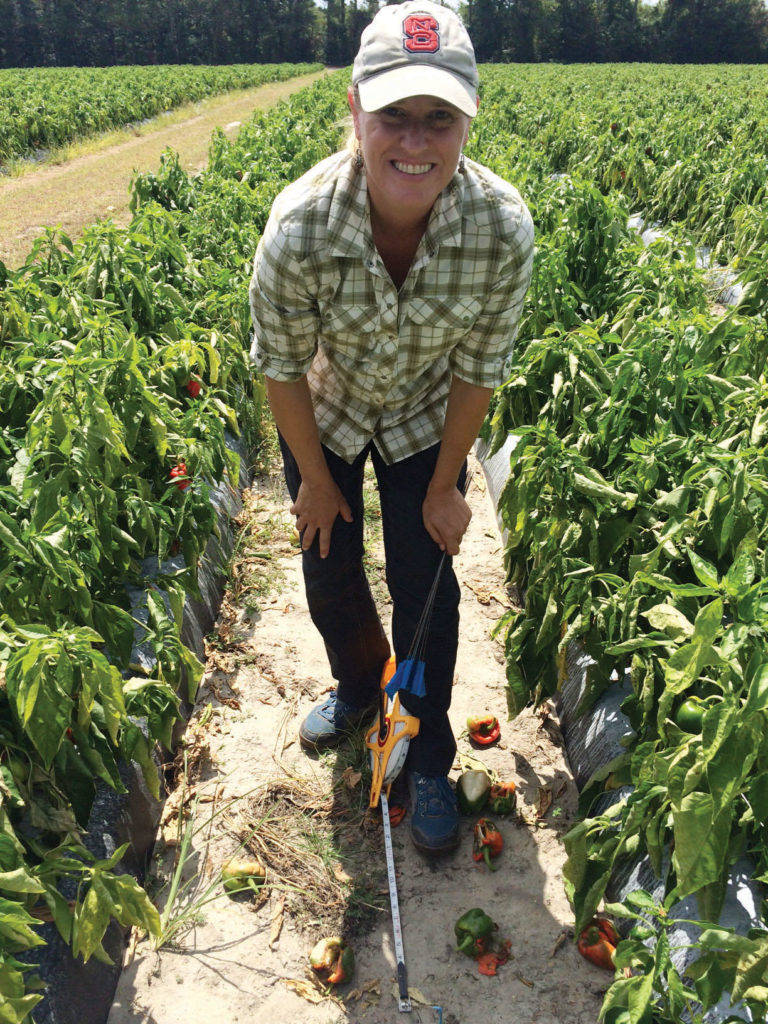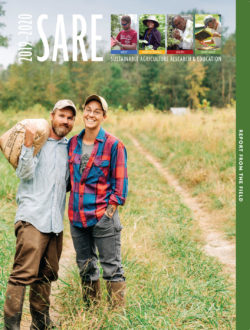"Not only does the loss of specialty crops reduce farm efficiency and sustainability, but the recovery of those crops can increase farm profitability and availability of fresh fruits and vegetables."
Lisa Johnson, North Carolina State University
THE CHALLENGE
Fruit and vegetable farmers are all too familiar with food waste, as they are forced to leave unmarketable but edible produce in their fields after harvest because it doesn’t meet industry grade standards. While farmers might look over their fields and appreciate the scale of what was left behind, they may lack a clear idea of both the true amount of waste produced and the amount of edible produce that could still be sold or distributed through secondary channels. Limited data exists on how much edible produce is left in fields. If farmers had that information, they could determine whether to continue harvesting their fields and whether to sell this extra haul to buyers or donate it locally. With an estimated 40% of food lost across the U.S. food system supply chain, efforts to recover and use any edible produce that would otherwise be lost have huge potential to improve farm profitability while addressing food security.
THE ACTIONS TAKEN

North Carolina State University graduate student Lisa Johnson used a SARE Graduate Student grant to evaluate vegetable crop yields on 13 fields of a 300-acre vegetable and commodity farm, which included crops like squash, zucchini, cucumbers and eggplant.
Working with researchers at the Center for Environmental Farming Systems (CEFS), Johnson crunched the numbers and estimated that unharvested crops that were edible and undamaged totaled 7,887 pounds per acre, an amount equal to 57% of the crop that was harvested and sold. From there, the project team developed an easy-to-use tool that enables farmers to more accurately estimate how much produce is left unharvested after the primary harvest. The tool uses field samples that were scaled into volume estimates using row spacing, field acreage, yield and buyer specifications provided by the grower.
THE IMPACTS
The potential effect of giving farmers tools to determine the value of unharvested produce is huge. One study estimated that in North Carolina alone, 117 million pounds of produce were left in fields in 2013. Specific project impacts include:
- An effective tool: The tool developed by Johnson showed huge potential in a case study on a commercial farm. It revealed that an estimated 7,900 pounds per acre of edible vegetables were left unharvested, 37% of which met buyers’ standards.
- Outreach and adoption: During the project, information was shared with 70 farmers and 45 agriculture professionals.
- Win-win solutions: The promising results of this project led to a CEFS team receiving a 2017 Research and Education grant to expand growers’ use of this food waste tool to improve their understanding of the economic value of unharvested crops and to provide them with win-win solutions for edible but unharvested produce. Johnson, now a senior research scholar, has since produced a body of research on this subject as a direct result of this SARE grant.
Visit the database of project reports to learn more about these SARE-funded projects: GS15-142 and LS17-280.
